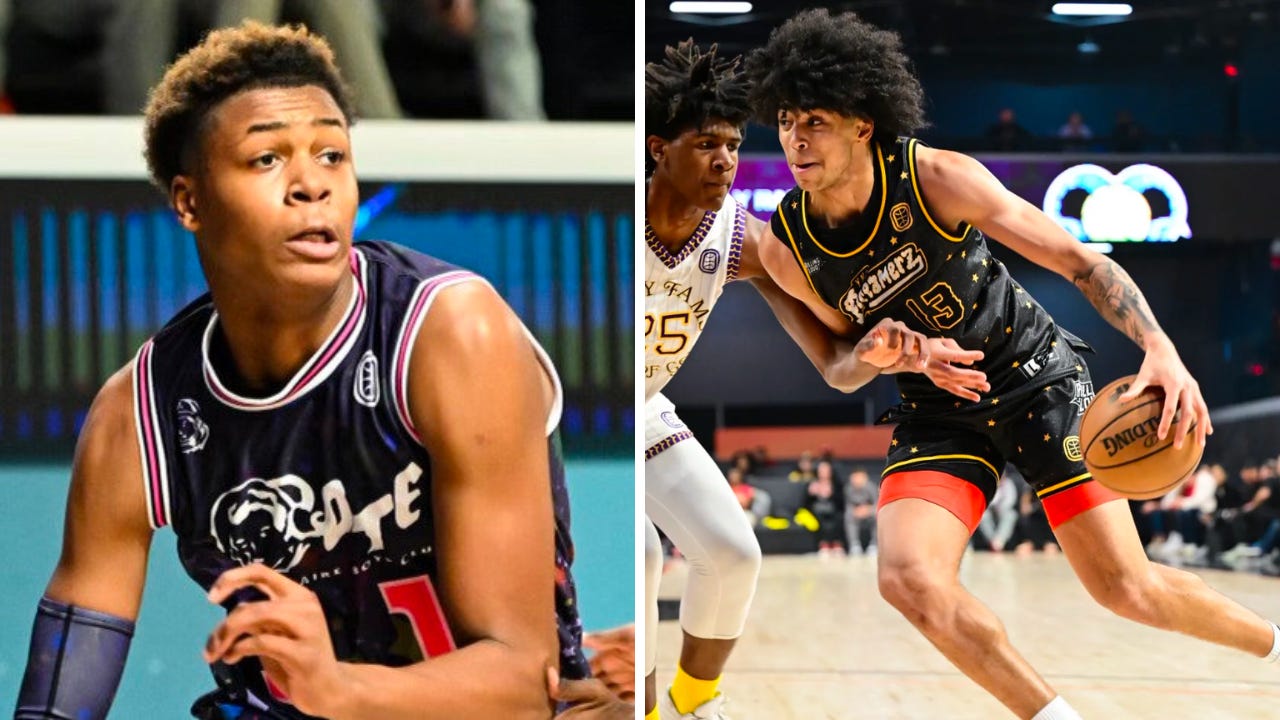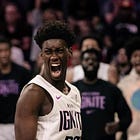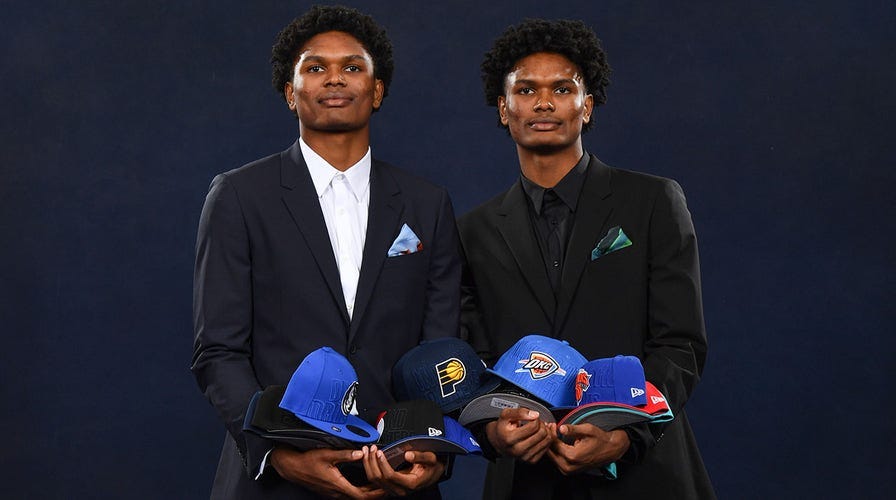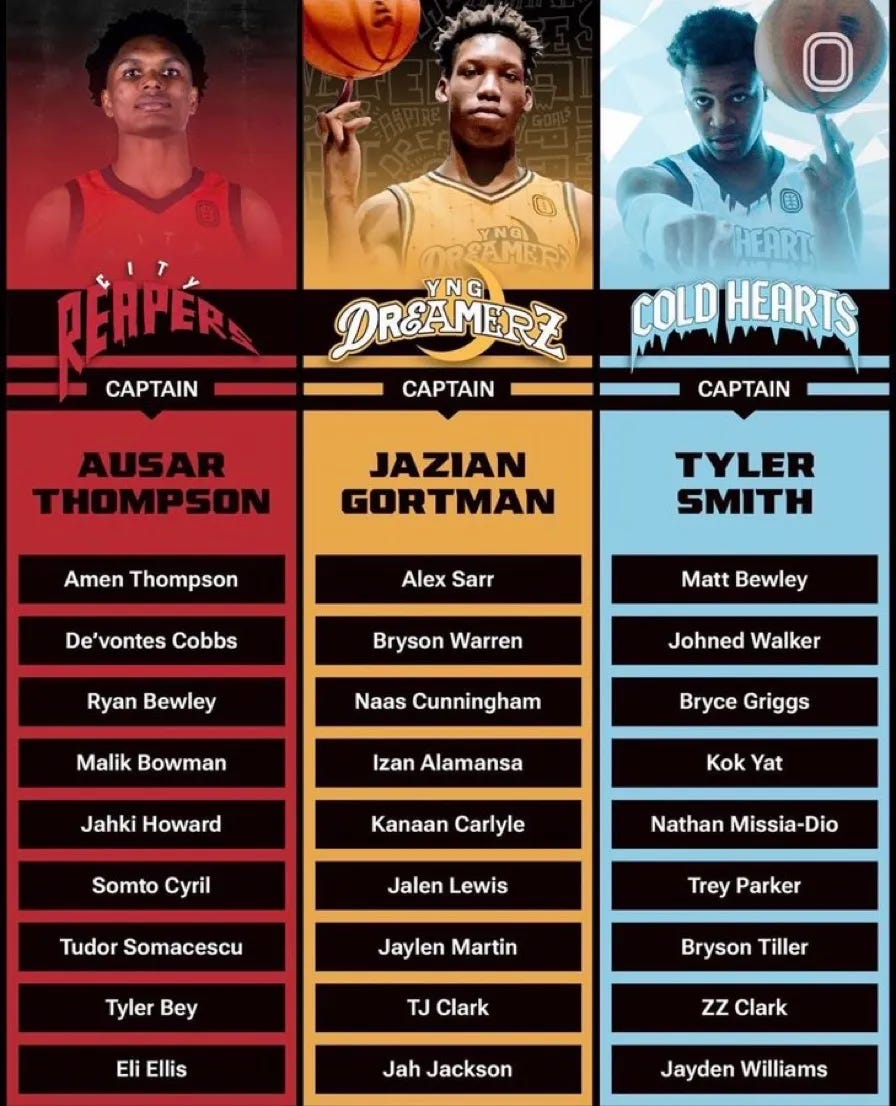The Converging Roads of Overtime Elite and the G-League Ignite
On the goals for both programs, the challenges that are developing in for alternative pathways prospects, and the recent decisions of Tyler Smith and Izan Almansa
Last month, Tyler Smith made the decision to depart Overtime Elite and head to the G-League Ignite. This week, international big man Izan Almansa has made the same decision, swapping sides to leave the Atlanta-based developmental program and heading west into the NBA’s pet project in Las Vegas.
Over the last two or three draft cycles, Overtime Elite and the G-League Ignite have become synonymous with the idea of ‘alternative pathways’ to the NBA for prospects. With mixed (and still largely unknown) results, it’s slowly becoming clearer what translates from these settings and what adjustments need to be made by those in charge of OTE and GLI to put their true pro prospects in the best position to succeed.
As we move into Year #4 for the Ignite and (Year #3 for Overtime Elite), it’s worth noting that these pathways are a little rough around the edges in some regard. While scouts are growing a little more comfortable with the level of play comparisons, the objectives of each group seem to be shifting and the complexion of their rosters next year will create new challenges in the evaluation space.
That is capped off by the most fascinating iteration of the alternative pathways yet: a G-League Ignite roster with eight players who will be 20 years or younger heading into the season, a doubling-down on the pre-professional appeal for prospects in a way that could have some very real challenges.
The Ignite are heading into their fourth draft cycle as a program. Results are mixed for how they help place their prospects in terms of draft position. The cream of the cream talents who come through their doors still end up as top-ten picks — likely guys who could reach that level almost anywhere they landed. The others, who come in and play a more supporting role, really struggle to solidify their footing as first-round picks.
That’s why we’ve seen, these last several seasons, only one Ignite player get drafted between picks 10-30 (MarJon Beauchamp). There have been four top-ten picks (Jalen Green, Jonathan Kuminga, Dyson Daniels, and now Scoot Henderson) to tout as success stories, but many more who have fallen out of the first round (Jaden Hardy, Isaiah Todd, Leonard Miller, Sidy Cissoko, and Mojave King) and even undrafted (Daishen Nix and Michael Foster Jr).
The moral of the story: it’s really difficult for teenagers to scale down and become role players in a way that allows them to show their first-round value. The fit of all these pieces together leaves some issues around the margins. They’ve lacked the ability to juggle the competing needs of showcasing young prospects with putting each player in the best position to succeed. Some players don’t show the full traits of their game as a result.
The on-court fits have been questionable, even if the talent level is befitting of a professional pathway approach. During the 2022 and 2023 seasons, the Ignite featured a lot of young players who shared the same flaws: they weren’t great or experienced off-ball or on the defensive end. It’s very difficult to win games in the G-League without experience, and with that season tends to come a little more reliable shot-making and the strength/ IQ to know how to rotate defensively.
In 2022, we saw the challenges and drawbacks of the lack of floor spacing. Hardy, Daniels, Beauchamp, and Henderson all played ball-dominant roles at earlier stages of their careers. While Hardy became the most impactful off-ball player, there were too many cooks in the kitchen and each of them suffered a little bit in terms of what they were able to show. They sacrificed reps, and had little to no space to operate in for the reps that they did.
Those problems weren’t really solved in 2023. In theory, they were addressed: building around Scoot Henderson meant bringing in fewer guards to take away reps and adding veteran floor spacers like John Jenkins and Aubrey Dawkins.
In reality, having so many young players who don’t know how to play off-ball is constantly damaging to floor spacing. Miller (30.4%) and Cissoko (31.4%) were both more handlers and creators prior to coming to the Ignite. What came was the difficulty of balancing trying to formulate a sensible roster around their best prospects and putting all their prospects on the floor so they could showcase their skills. Those were competing interests at times — and while Miller and Cissoko should be lauded for their efforts to conform, aspects of their creation went undervalued this draft cycle, in my opinion.
On the defensive end, the results have been far worse. The Ignite often had three teenagers on the floor at the same time playing in a professional league, causing issues with their rim protection and their communication on difficult possessions. On a micro level, I think that means we need to throw out some of the stats around prospects for the Ignite, as the context likely makes it hard for any of them to produce positive metrics.
On a macro level, it probably means there need to be some adjustments from the Ignite moving forward. Grabbing a bunch of young players and giving them the platform, instruction, and full-time training that the G-League offers undoubtedly makes them better and prepares these prospects for success as a professional. But it doesn’t showcase each prospect in their optimal roles, nor does it allow them all to be as successful as possible with so many redundancies in their games.
Next year, the Ignite will have their youngest and most fascinating roster yet. Top pick potential exists with Ron Holland and Matas Buzelis on the roster. Both are frontcourt creators who thrive with the ball in their hands and are, at best, questionable with their off-ball consistency.
New signing Izan Almansa brings top-ten potential as well. Dink Pate is an interesting frontcourt athlete, though he contributes nothing around Buzelis and Holland at the 3-point line. London Johnson and Babacar Sane are back for another go-’round, though neither are ideal floor-spacers next to Buzelis and Holland — and the table-setting nature of Johnson’s play could directly clash with the idea of multiple frontcourt and wing creators.
There are a few young floor spacers who are worth noting, though. Thierry Darlan is incredibly young and raw, but the 6’7” product from Africa is more of an off-ball shooting prospect than we’ve seen come through the Ignite program. That’s where Smith, a stretch-4 from OTE, can provide much of the same. Their ability to perform right away will be vital to this team.
Again, there have been some moves made to make the roster fit better next to Holland and Buzelis. Smith and Darlan are part of that, and the veterans they bring in for next year will matter heavily as well. But my worry comes much more on the defensive end, as the Ignite will have at least eight teenagers on their roster vying for minutes.
I think the Ignite program is succeeding in part of its mission: it’s preparing prospects for the NBA at a pretty high level — and a level that is dependable for NBA teams at this point. Where it might be coming up a little short is in putting each prospect in their program in a position to succeed. The solution in my eyes is to be more selective about how many prospects they bring, not necessarily which ones they take.
There’s a reason the first group from the Ignite was the easiest to get a solid read on from an eval standpoint: it was easier to sift through their impacts since they were the only teenagers on the court. We seem to be trending farther away from that approach. Where I worry is in thinking about this 2024 class in general. The Ignite have two of the leading candidates to become the top pick, something they’ve yet to attain and a designation that would truly verify their status as a tremendous option for NBA-bound teenagers. But with Buzelis and Holland as unique frontcourt creators, will the Ignite surround them with enough floor spacing and self-aware role players to let their games pop in a way that helps earn them that top-pick designation?
If not, there are flaws with the theory behind how the Ignite are going about their process — not just issues in the execution.
As for the program Smith and Almansa leave behind, Overtime Elite has been a difficult level to evaluate this year. It’s hard to know or trust the competition level, organization, or if there really will be fruits to the labors of these players and coaches solely dedicated toward player development. I’ve been struggling to contextualize its on-court product of late, and thus somewhat sour on the long-term outlook of OTE as a pre-draft option for truly top talents.
That perception is already shifting a bit. I was really struck by what Damien Wilkens, former NBA veteran and general manager of the Overtime Elite program, said on Twitter about the pathway back in early June.
“I think OTE is the best path for [elite prospects] to get accelerated development prior to going on what path is available to them. [In] most cases, it’s college. In special cases, it’s pro… either way, there’s no program anywhere for guys 16-18 [years old] that can provide the development we do.”
Perhaps it’s been the phrasing of ‘alternative pathway’ that has created this misperception, or maybe it was the early inclusion of the ability to pay players and, consequently, take away their amateur status. But I needed this reframing from Wilkens to see OTE for what it is: a way to provide basketball-specific instruction to young men before college.
Some, like the Thompson Twins, chose to stay longer and develop for the NBA instead of going the college route. That decision undoubtedly paid off: both were selected in the top-five of the 2023 NBA Draft, even with very consistent questions about their lack of jump shots and the difficulty in evaluating the level of play they competed against.
Others, like Smith and Almansa, will use OTE as a springboard to the G-League Ignite program, hoping more basketball-centric training could give him a leg up and an idea of what to expect. The same could be said of Alexandre Sarr, who is headed to the Perth Wildcats next year and is one of my favorite sleeper top-five picks for the 2024 NBA Draft.
But Smith, like others, was very clear from the outset that the pre-professional mindset was what attracted him to OTE. In August 2021, when he signed with OTE, he gave that as his rationale:
"My goal wasn't to play college, it's to play in the NBA. [Joining OTE] will get me there faster and make me more ready once I'm there. I've been talking to them for three months already. They've been telling me they have NBA facilities, trainers and nutritionists from NBA teams."
What OTE has done is accumulate talent, give them the resources to focus on hoops, and send them on their way to whatever pathway they individually deem is best for them. That, at the very least, should be lauded, even if there have been some flaws in the execution and challenges for NBA scouts in consistently evaluating the OTE product.
As Smith moves on, it’s important to note that not every player that OTE brings in is meant to be like the Thompson Twins: going from Atlanta to the NBA. If a year happens (like 2024 is shaping up to) where no prospects are back in that first-round conversation, then so be it. It seems very likely that the Thompson Twins are the last batch of potential top-five prospects, and a lot of the future viability of the program to keep players with those ambitions rests on the successful translation of Amen and Ausar to the league. We won’t have the results for at least a few more years.
The OTE program has been stuffed with talent, which is only a good thing. To see their top players now either moving on to successful destinations should only validate the pathway as an alternative to high school, and a potentially viable pathway to college. Just look back at the draft from this October and think about where everyone who is leaving is headed:
The Twins are going to the NBA and were both top-five picks. Jaylen Martin and Jazian Gortman have signed two-way deals. Tyler Smith and Izan Almansa are headed to the G-League Ignite. Alex Sarr to Perth, Kanaan Carlyle to Stanford, Rob Dillingham, who joined later in the year, to Kentucky — these are all tremendous outcomes for a hybrid pre-college and pre-professional model.
There’s a lot that OTE can do better moving forward and it’s far from perfect as a model. But to infer that it could be broken because prospects are leaving instead of viewing it as their last stop before the NBA is very short-sighted.
Instead of the roads between Overtime Elite and the G-League Ignite programs diverging, it seems likely that this could be the start of them converging more frequently. OTE is a great way for the Ignite to figure out which high-end prospects are serious about the pro route and how they fare in a basketball-first setting. It’s also a great chance for us to see some top prospects prior to heading to college, a blind spot in the public eye for many.
There are areas to clean up without a doubt, and I believe the 2024 cycle will be a challenging, make-or-break year for the current iterations of their model. I’m curious if there’s opportunity for everyone in the Ignite program to get their flowers, if the top guys are helped or hindered by the construction of the roster, and what they look like competing against an older, more talented league with that much youth. I’m curious as to whether the Overtime Elite program hype machine can generate another star prospect for the pre-NBA route, and do so quickly — or if this is now transitioning toward a pre-collegiate model at its core.
2024 is the year I start expecting there to (hopefully) be more answers than questions.







